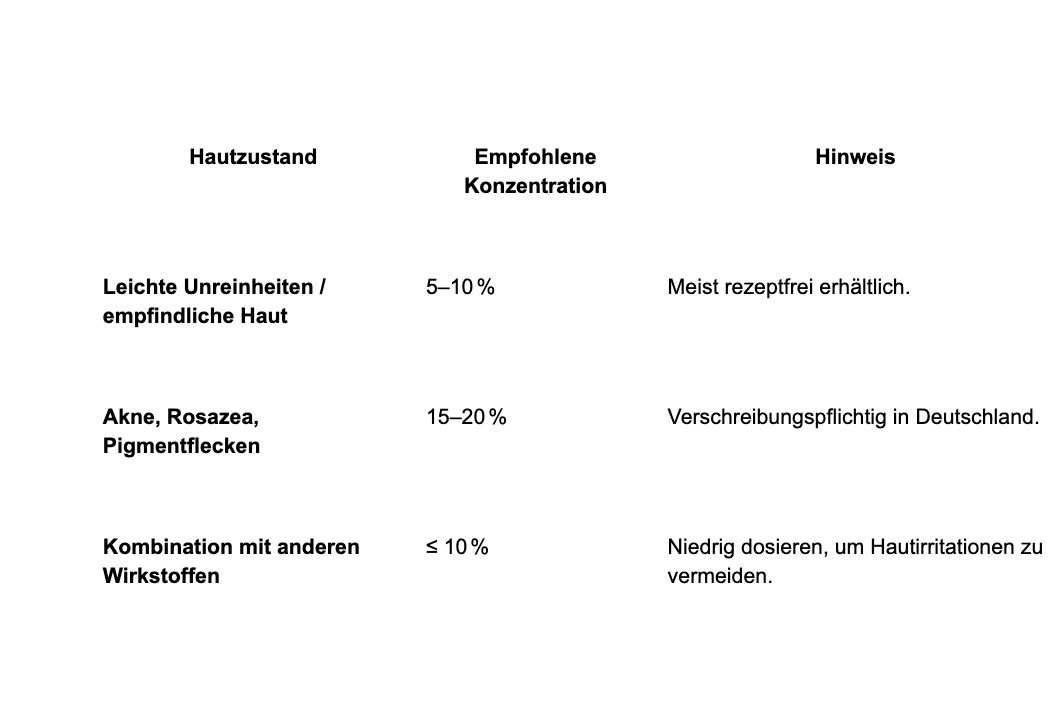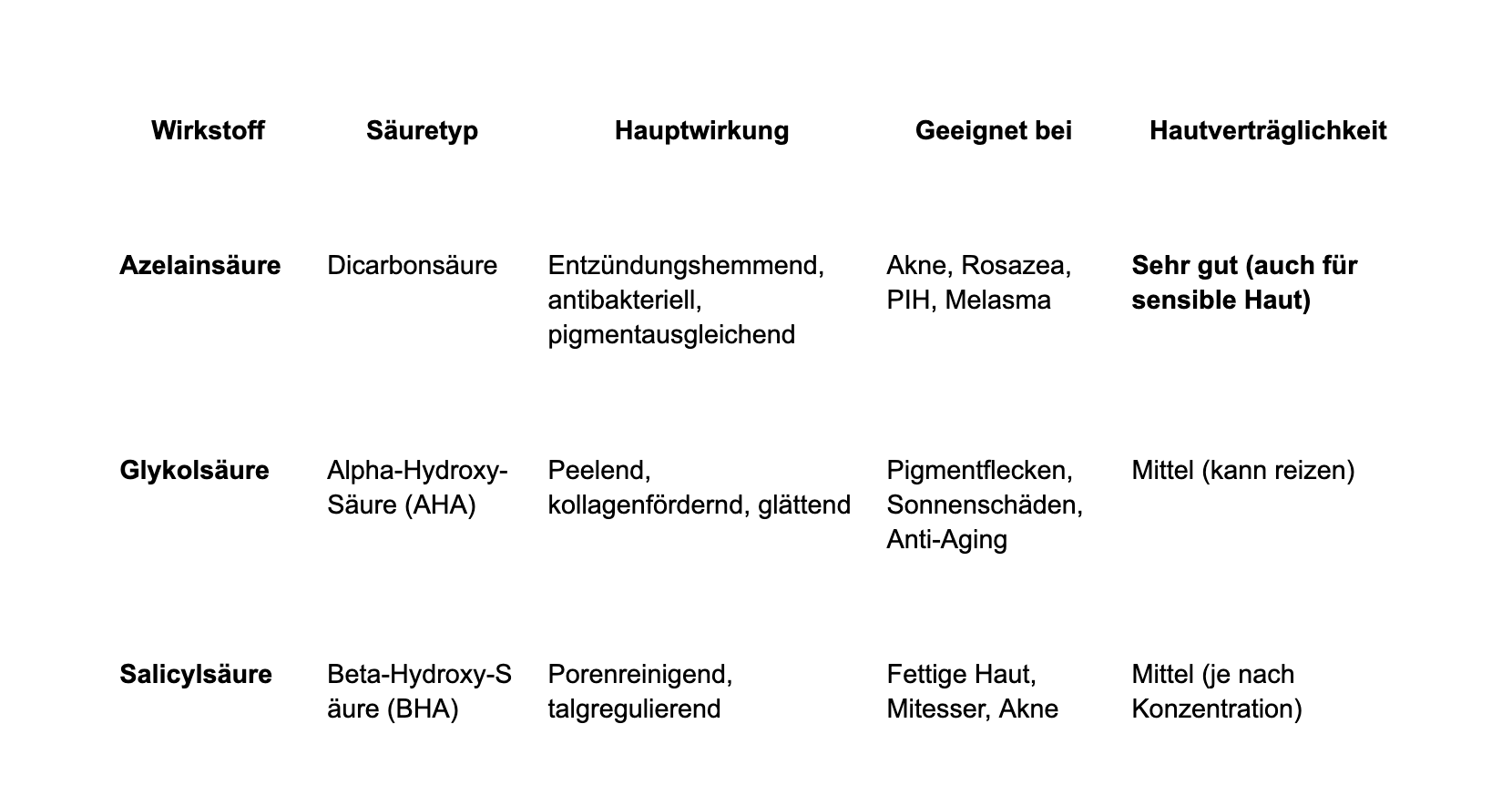Quellen
-Grimes P. E. Melasma. Etiologic and therapeutic considerations. Archives of dermatology. (1995).
-Sheth, Vaneeta M., Pandya, Amit G. Melasma: A comprehensive update. Part II.Journal of the American Academy of Dermatology. (2011, October 1).
-González-Molina, V., et al. Topical Treatments for Melasma and Their Mechanism of Action. The Journal of clinical and aesthetic dermatology. (May 2022).
-Spaggiari, C., et al. Extraction and Quantification of Azelaic Acid from Different Wheat Samples (Triticum durum Desf.) and Evaluation of Their Antimicrobial and Antioxidant Activities. Molecules. Ibid.
-Thiboutot, D., et al. Standard management options for rosacea: The 2019 update by the National Rosacea Society Expert Committee. Journal of the American Academy of Dermatology. (2020).
-Silpa-archa, Narumol, et al. Postinflammatory hyperpigmentation: A comprehensive overview.Journal of the American Academy of Dermatology. (October 2017).
-Spaggiari, C., et al. Extraction and Quantification of Azelaic Acid from Different Wheat Samples (Triticum durum Desf.) and Evaluation of Their Antimicrobial and Antioxidant Activities. Molecules. (March 2023).
-Passi, S., et al. Mechanism of azelaic acid action in acne. Giornale italiano di dermatologia e venereologia : organo ufficiale, Societa italiana di dermatologia e sifilografia. (October 1989).
-Fitton, A., & Goa, K. L. Azelaic acid. A review of its pharmacological properties and therapeutic efficacy in acne and hyperpigmentary skin disorders. Drugs. (May 1991).
-Chilicka, K., et al. A comparison of the effectiveness of azelaic and pyruvic acid peels in the treatment of female adult acne: a randomized controlled trial. Scientific reports. (2020).
-Zaenglein, A.L., et al. Guidelines of care for the management of acne vulgaris. Journal of the American Academy of Dermatology. (2016).
-Schrute, B.C., et al. Azelaic Acid: Evidence-based Update on Mechanism of Action and Clinical Application. Journal of Drugs in Dermatology. (September 2015).
-González-Molina, V., et al. Topical Treatments for Melasma and Their Mechanism of Action. The Journal of clinical and aesthetic dermatology. (May 2022).
-Kim, S J et al. Increased in vivo collagen synthesis and in vitro cell proliferative effect of glycolic acid. Dermatologic surgery: official publication for American Society for Dermatologic Surgery. (1998).
-Hollinger, J.C., et al. Are natural ingredients effective in the management of hyperpigmentation? A systematic review.The Journal of Clinical and Aesthetic Dermatology. (February 2018).
-A. L. Zaenglein, et al. Guidelines of care for the management of acne vulgaris. Journal of the American Academy of Dermatology. Ibid.
-National Center for Biotechnology Information. PubChem Compound Summary for CID 2266, Azelaic Acid. National Library of Medicine. (n.d.).
-Zaenglein, A.L., et al. Guidelines of care for the management of acne vulgaris. Journal of the American Academy of Dermatology. Ibid.
-Albzea, W., et al. Azelaic Acid Versus Hydroquinone for Managing Patients With Melasma: Systematic Review and Meta-Analysis of Randomized Controlled Trials. Cureus. (July 2023).
-Webster, G. Combination azelaic acid therapy for acne vulgaris.The Journal of the American Academy of Dermatology. (2000, August 1).
-Farshchian M. & Daveluy S. Rosacea. StatPearls. (2023, August 8).
)
)

)


)
)
)